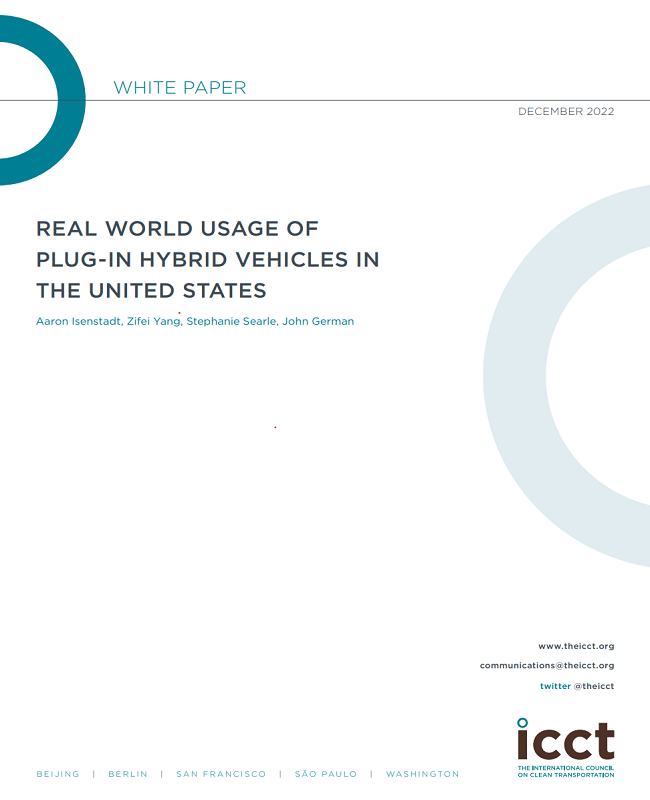Plug-in hybrid electric vehicles (PHEVs) have the potential to reduce emissions from light-duty vehicles and help ease the transition to fully electric, zero tailpipe-emission vehicles. Though PHEVs store less energy in their battery packs than fully electric vehicles, PHEVs can be designed with enough energy storage to cover most daily trips in the United States. As long as such vehicles begin with a full, or nearly full charge every day, they have the capacity to significantly reduce fossil fuel consumption.
Spurred by recent investigations into the real-world performance of PHEVs in Europe and China, this study examines the current state of PHEV usage in the United States. Previous research and data from early adopters of PHEVs in the United States demonstrated that PHEVs achieved real-world electric drive share close to that expected by the U.S. Environmental Protection Agency (EPA) and National Highway Traffic Safety Administration (NHTSA). In this study, we present an analysis of more recent data from two previously unexplored sources: self-reported fuel consumption from Fuelly.com and engine-off distance traveled collected by the California Bureau of Automotive Repair (BAR). These new data cover a broader variety of PHEV models and newer model years than prior datasets. Unlike prior datasets, both Fuelly and BAR are actively growing. While Fuelly data are voluntarily reported, the data are collected for the benefit of site users, not for research, and are not limited to specific vehicle models. Additionally, the BAR data presents the first widespread, auto
Preview the report here:
More About this Resource
Date: December 1, 2022
Type: Research Reports
Tags: None
Countries: United States
States: None

